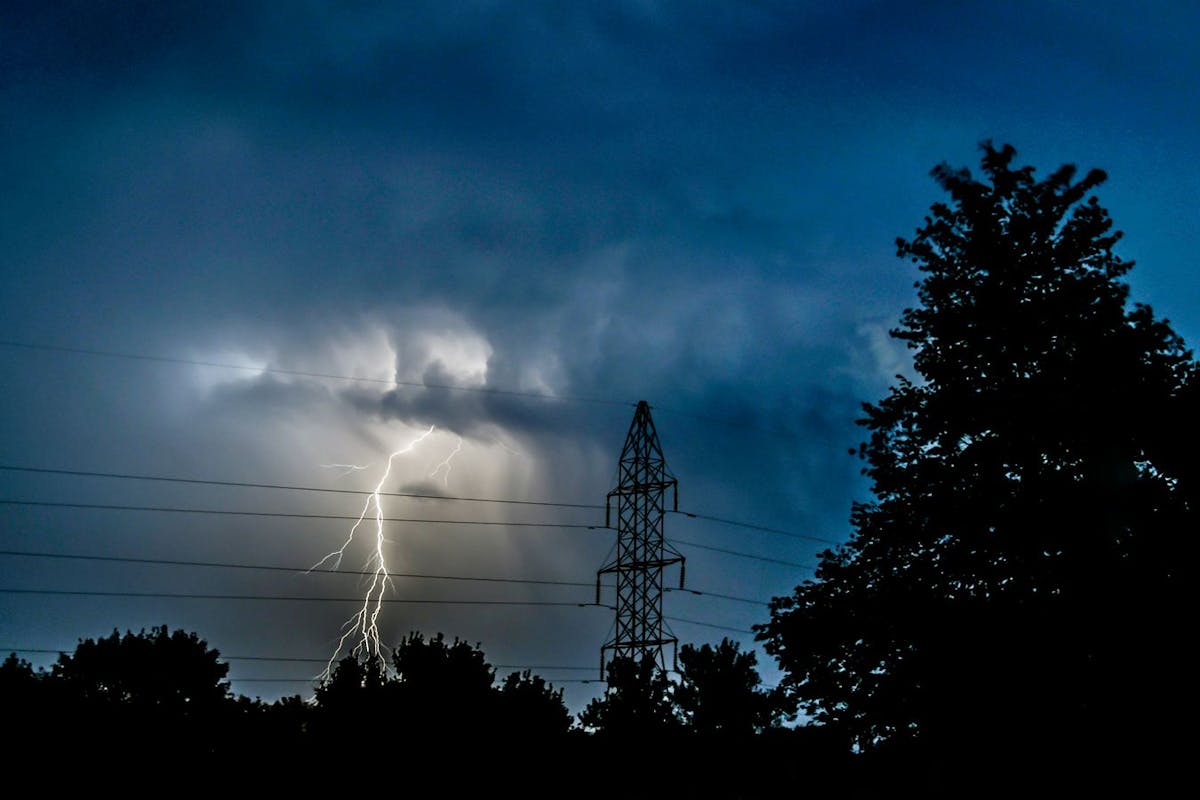What Is Bidirectional EV Charging? How it Works for Your EV and Home
Last edited

Author
Andrew Giermak
Solar and Electrification Writer and Editor

Editor
Andrew Blok
Electrification and Solar Writer and Editor

More EVs with bidirectional charging capabilities are coming to market and getting out on the road. That means being able to use your vehicle to power your home, run devices, or even send energy to the grid. How can this new technology change how you use energy and how much you spend on it?
We’ll go over how the tech can benefit EV owners by providing backup power and additional savings, especially when paired with solar panels.
See how much you can save with home energy changes
What Is a Bidirectional EV Charger?
A bidirectional electric vehicle (EV) charger is a system that charges electric vehicles with power from your home solar panels or the grid and can send power from your vehicle back to your home or the grid. It enables two-way communication between an EV and the electrical grid, allowing energy to flow both ways.
Compared to traditional chargers that can only send power to an EV’s battery, a bidirectional charger allows EV owners to discharge electricity from their vehicle to use onsite, share, or sell.
By definition, bidirectional EV chargers can refer to any product that is able to transmit electricity in two directions: into and out of an electric vehicle battery. As an exciting new piece of EV charging technology, bi-directional EV chargers are becoming more widely available.
How Bidirectional EV Charging Works
Bidirectional EV charging works in several different ways, with various capabilities that can benefit homeowners, travelers, businesses, the energy grid, and communities recovering from natural disasters.
Vehicle-to-home (V2H) and vehicle-to-building (V2B) charging
Vehicle-to-home (V2H) charging is the process of powering your home with electricity transmitted from an EV battery. Also known as vehicle-to-building (V2B) charging in larger instances, V2H charging allows bidirectional EV charging to function as a backup generator for backup power.
Whether the grid has a temporary power outage due to severe weather conditions, or utility rates are at their highest due to local demand, V2B and V2H chargers help you pivot from grid-supplied electricity and power your property with your vehicle’s battery reserve.
Just because you can power your home with your car does not mean it has to remain in the driveway. Electric vehicles are still vehicles, meaning that bidirectional charging can transform capable EVs into mobile storage batteries.
With dozens (and potentially hundreds) of kilowatt-hours available on the go, bidirectional EVs can use V2H or V2B charging to power any property within driving distance.
Vehicle-to-grid (V2G)
With the proper equipment and local utility agreements, bidirectional EV chargers may be used as “vehicle-to-grid chargers” (V2G). With V2G charging, power is exported from your EV’s battery reserve and sent to the electricity grid.
Exporters may be compensated for the energy they share or sell, depending on the rules and regulations enforced by local utilities. Although the infrastructure for V2G charging is still in its infancy, V2G charging has enormous implications for future energy markets if EV owners can sell their battery power easily and profitably.
Vehicle-to-load (V2L)
Sometimes, you may not even need a home or building to use your EV’s energy! Some vehicles have bidirectional charging capability built in that allows you to directly power home appliances, camping equipment, mobile workstations, large electronic devices, power tools, and more.
Unlike V2H and V2G charging, V2L does not require a bidirectional charger, as the EV uses an integrated inverter to send AC power directly to the device.
Vehicle-to-everything (V2X)
While the early iterations of bidirectional charging are designed to work with either your home, the grid, or a specific electric load, many manufacturers are looking to adapt their bidirectional charging systems to work with anything, integrating all of the bidirectional charging types into a single vehicle.
See how much you can save with home energy changes
Benefits of Bidirectional Charging
With vehicle-to-grid and vehicle-to-home technology, bidirectional EV charging delivers many financial and lifestyle benefits for homeowners and their communities.
Backup power
Energy resilience is perhaps the most important benefit of bidirectional EV chargers, allowing electric vehicles to act as mobile backup batteries. With a backup source of electricity on wheels, bidirectional charging can help keep homes online during blackouts, or deliver fleets of power to areas in crisis after forest fires, hurricanes, or other disasters.
Response to high grid demands
Even if there is not an emergency, bidirectional EV chargers can help stabilize the supply and demand of the power grid for utilities.
To increase the energy supply during peak demand hours, electricity companies can incentivize EV owners to discharge their battery power in exchange for bill credits or real cash compensation.
Export to the grid and earn
If you belong to a net metering plan with your utility company, you can send power from bidirectional charging back to the grid for the net metering credit rate. The same is true if you’re part of a virtual power plant. Power from bidirectional charging can go to the grid and earn savings.
Optimized charging costs and energy savings
While managing the flow of electricity between your home, vehicle, and the grid, bidirectional EV chargers can decrease your energy costs. Especially when connected to a home solar energy system, bidirectional chargers make it easy to power your life with the cheapest possible electricity source.
For example, when you charge your EV with the excess energy produced by your solar panels each day, you could then run your vehicle with the free and infinite power of the sun, export the clean electricity to your home, or send it to the power grid.
What EVs Have Bidirectional Charging?
Only some electric vehicles on the market today can support bidirectional EV charging.
| Vehicle | V2L | V2V | V2H | V2G |
|---|---|---|---|---|
| Cadillac Lyriq | ✅ | |||
| Cadillac Optiq | ✅ | |||
| Cadillac Escalade IQ | ✅ | |||
| Chevrolet Silverado EV | ✅ | |||
| Chevrolet Equinox EV | ✅ | |||
| Chevrolet Blazer EV | ✅ | |||
| Fisker Ocean | ✅ | ✅ | ||
| Ford F-150 Lightning | ✅ | |||
| Genesis GV60 | ✅ | |||
| GMC Sierra EV | ✅ | |||
| GMC Hummer EV | ✅ | |||
| Hyundai Ioniq | ✅ | |||
| Jeep Wrangler 4xe | ✅ | |||
| Kia EV6, EV9 | ✅ | |||
| Lucid Air | ✅ | |||
| Mitsubishi Outlander PHEV | ✅ | |||
| Tesla Cybertruck | ✅ | ✅ | ✅ | |
| Volkswagen ID.4 | ✅ | ✅ |
Finding the Right Bidirectional EV Charger for You
If you’re looking into bidirectional charging for the first time, there are factors to make sure about. You want the charger and vehicle to be compatible with the goals you’re looking to meet.
- Compatibility: Not all EVs can be used for bidirectional charging. And not all bidirectional EVs work for every possible use case. Your home electrical system and setup may not be immediately compatible either. Some homes may need a dedicated 240V outlet installed.
- Your charging needs: What are the main uses you expect from bidirectional charging? Send power to the grid to maximize net metering credits? Having an emergency backup option for an outage at home? Make sure your EV and charger can fit your needs
- Installation and specifications: Bidirectional chargers generally need upgraded 240V outlets. In some cases, electrical work such as a new electrical panel may be needed. Account for any extra work and expense as you’re shopping.
- Extra features: Some bidirectional EV chargers, have smart capabilities, scheduling functions, and automatic energy management.
Major Bidirectional EV Charger Brands
There’s an increasing number of brands and models of bidirectional EV chargers. Here are some brands to look at.
- dcbel
- Enphase
- Wallbox
- Sigenergy
- SolarEdge
- Fermata
Bidirectional EV Charger Incentives
Home EV charging equipment may be eligible for federal tax credit of 30% up to $1,000 of the cost of the equipment, related components, and labor and installation. Eligibility is also based on location.
To learn more about the tax credit overall, see the Department of Energy’s information. More about eligibility by location across the country is available. You can also read our guide on all EV tax credits and incentives.
It’s also worth checking for local or utility-level incentive or rebate programs you may qualify for. You can contact your local utility or go to your utility’s website. You can also use a site such as N.C. State University’s Database of State Incentives for Renewables and Efficiency which gives a searchable list of state and local programs.
(Note: Many clean energy and consumer tax credits are being reconsidered by Congress in 2025. Make sure credits and incentives are available to you before moving ahead with your project.)
Using Bidirectional Charging and Home Solar Power
In summary, bidirectional charging enables electric vehicles to act as mobile power generators that can be used to electrify homes, other vehicles, or the grid.
With vehicle-to-home and vehicle-to-grid charging, EV drivers can utilize bidirectional chargers to share their energy with others or use battery power in the absence of utility-supplied power.
Given these potential benefits, the technology is an exciting frontier in the development of electrified transportation, energy management, and sustainable energy infrastructure.
For more information on how to power your electric vehicle, check out our guide to EV charging. You can see how much you could save by going solar by using our solar savings calculator and explore the impact of other home energy upgrades with Palmetto’s Energy Advisor.
See what home electrification can do for you:
Frequently Asked Questions
Which EVs have bidirectional charging?
Not all EVs have bidirectional charging as a feature. Chevy, Cadillac, Fisker, Ford, Genesis, Hyundai, GMC, Jeep, Kia, Lucid, Mitsubishi, Tesla, and Volkswagen have EVs with bidirectional charging capabilities.
Why do people want bidirectional charging?
Bidirectional charging can give EV owners and solar owners benefits such as energy savings, energy bill savings, backup power during outages, and energy options during high-priced periods.
How much does a bidirectional EV charger cost?
The price of a new bidirectional EV charger varies based on its features, capacity, and speed. You need to take compatibility into account, too. Bidirectional EV chargers range from about $850 to more than $10,000 depending on the other equipment required.


